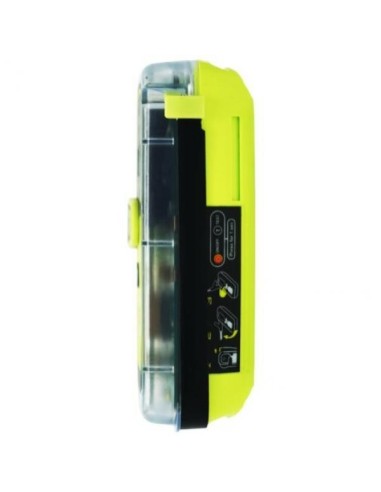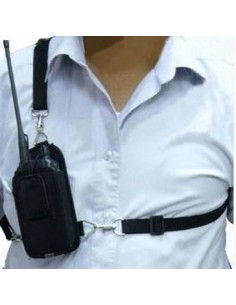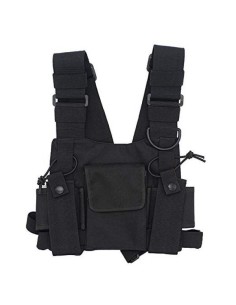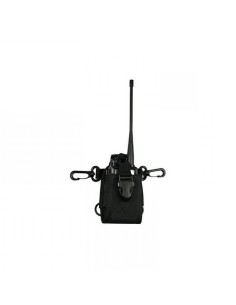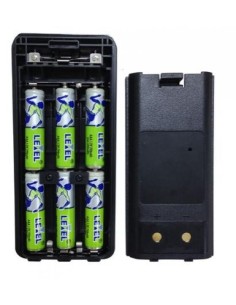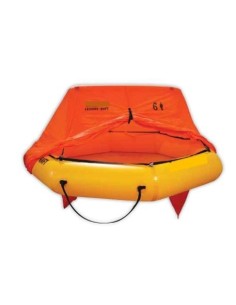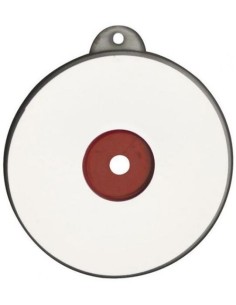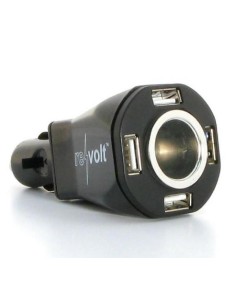Safety - Life jackets- Distress and Survival
INDIVIDUAL DETECTION BEACON ACR RESQLINK™400+ 406 MHz with GPS
The ResQlink410 (new model) Emergency Beacon ™ PLB Personal Locator Beacon Small and powerful, floating, manually triggered, 406 MHz emergency beacon with GPS and MEOSAR compatibility reducing transmission time to SARSAT center.
It slips easily into the pocket of a jacket, around the neck or attaches to the life jacket with its clip. Easy to handle, easy activation, it transmits 2 distress signals simultaneously 406 and 121.5, provides GPS location automatically. This is a new model, it is delivered with the GLONAS SARSAT S SARSAT Reception.
Distress beacon PLB Personal Emergency Beacon RESQLINK™ 410 - 406 MHz with GPS GALILEO and MEOSAR - Personal Beacon (NEW MODEL)
TO ALLOW YOU TO HAVE A BEACON WITH THE LONGEST POSSIBLE BATTERY VALIDITY WE ORDER THESE BEAMS AS AND WHILE. .
THE BEACONS CAN BE ORDERED ON THE WEBSITE, BUT THEREFORE YOU WILL HAVE 10 TO 20 DAYS OF WAITING TIME FOLLOWING THE PERIOD OF THE YEAR WE RECEIVE YOUR ORDER.
THEREFORE ANTICIPATE YOUR PURCHASE DURING A DEPARTURE TOWARDS A FAR DESTINATION OR A MARITIME CROSSING.
NOTE THAT A PORTABLE BEACON IS NOT READY UNLESS YOU ALREADY CHANGE THE CONTACTS IDENTIFIED IN THE RECORD. IT CANNOT BE LENT.
THIS BEACON HAS A FRENCH REGISTRATION CODE AND CAN ONLY BE REGISTERED WITH COPSAT SARSAT IN FRANCE
This is the new model, delivered with the GALILEO MEOSAR Reception and floatableDESCRIPTION
The ResQlink400 beacon ™ is small and light and can be easily stored in your pocket or attached to your belt or lifejacket. So you have it with you at all times without it getting in the way, so you don't have to look for it when you need it. It is suitable for both aeronautical and marine use.
The ResQlink meets the watertightness standards that make it buoyant and allow it to be submerged, but as long as this can be done, you should avoid exposing it to prolonged immersion as much as possible. It transmits a 406 MHz signal to operate directly on the international Cospas-Sarsat satellite network, and of course the 121.5 MHz signal for close search and rescue. This beacon provides a very large GPS coverage and gives an accurate position to within 100m which allows the rescue team to quickly locate the location. But a special feature, it is also compatible with MEOSAR and GALILEO GNSS to shorten the alert time from 50 minutes without MEOSAR to 10 minutes.
COMPATIBLE MEOSAR - What is MEOSAR?
The MEOSAR search and rescue system, is an advanced new generation satellite based on a technology that revolutionizes Cospas-Sarsat. The objective is to determine the location of the beacon within a radius of 5 km in less than 10 minutes. This is made possible thanks to 72 MEOSAR satellites positioned at an average terrestrial orbital altitude.
A PLB beacon is activated manually and not automatically (shock, water, fire...): it is therefore necessary to voluntarily deploy an antenna and press the "ON" button to activate it. The beacon sends its 406 signal and alerts the rescue, in this case it provides the GPS position and works for at least 24 hours. A very bright stobe and INFRARED LED allows to direct the signal and be more easily spotted in the water at night or in gray weather.
You can regularly check the status of your ResQLink400 personal beacon by pushing a button to test its internal electronics and GPS and see if it is ready for use.
The ResQLink410 PLB beacons have been tested multiple times both in the most extreme conditions and around the world, mainly when navigating in the open sea or exploring or flying over hostile areas. They have passed all the tests guaranteeing their reliability.
This Beacon is suitable for both aeronautical and marine use.
PLB Beacons have serialized programming by default.
At the time of purchase, you will need to register your beacon with the relevant authorities of the country corresponding to the serialized coding.
NOTE: It is preferable, to easily record your Beacon to buy it in France if you are a French resident.
Products purchased abroad must be unrestricted to accept a French registration ... You have to know it previously.
Also compare what is comparable, this beacon provided your GPS position when issued, which is not the case for all products on the market, this is the full option product, there too be careful of the advertising.
Characteristics
-
-
Size: 114.8 x 51.6 x 37.8 mm
Weight: 148g
Class 2 lithium battery
Battery replacement every 5 years from the date of manufacture or after the beacon is put into service.
Autonomy: 24 hours at -20°C
Activation: Manual
3 levels of signal technology: GPS positioning, powerful 406 MHz signal and 121.5 MHz tracking capability
Waterproofing: 5m for 1 hour or 10m for 10 minutes
Authorizations: COSPAS-SARSAT MEOSAR Compatible
Radiant power: 5W
Warranty: 5 years - International approvals
RADIO LICENSE
Users in France are not required to hold a radio license for a PLB. Other countries may require the PLB user to be licensed. For advice check with your national communications licensing authority.
USER MANUAL
- SEE LOADING ZONE UNDER PICTURES FOR DOCUMENTATION
ATTENTION
BEACON MUST BE REGISTERED WITH SARSAT TO BE OPERATIONAL
(You must be living in France to register this PLB by this channel)
Register your RESQLINK or you PLB SAFALINK SOLO from KANNAD OR OTHER PLB
How it works with the SARSAT system:
The tag as soon as it is activated transmits on 2 frequencies and this simultaneously:
A first emergency signal to the SARSAT satellite system that covers (normally) the entire terrestrial surface on the 406 MHz band
Another local homing signal in 121.5MHz (our old beacons - so it's not silly to always listen to the 121.5 in the check-list) and this to allow goniometric radio detection which normally speeds up the process. field research as the show approaches.
Once activated, the signals are transmitted with a power of 5 watts for at least 24 hours. The 406 MHz transmission was chosen to allow transmission to satellites without supposed shadows whatever the conditions. The fact that the beacon is GPS allows the transmission of the GPS position.
The SARSAT watchdogs then transmit the alert to the rescue zones quickly after having previously checked the information entered during the registration (contacts, telephones, destination, carrier, if entered before the departure, coherence ...).
(Do not forget to indicate your route and destination to the people who need to be contacted and you have indicated when registering the beacon, it is crucial.)
Small points of importance:
- In our case, it is a portable beacon, think it must be able to trigger it in an accident and find it quickly (in a shock objects "fly") use the leach.
- If your plane has a fixed beacon, check regularly that contact details are still valid, (phone number, death, divorce etc .. disturb the quality of information in time ...)
- All beacons allow only a certain number of functional checks before battery change and / or inspection by an authorized workshop. Even if the warranty is several years on the product. So do not check too often your beacon.
And who told you all that:
- Aerodiscount of course - Discount on the price but not on the quality of the information -
We are pilots before being a trader ... especially as regards safety, your security.
The device also includes SOS LED flashlight, of the type of lifejackets, manually activated, consisting of Electro Luminescent Diodes of good power, it transmits pre-recorded SOS signals (TI IT TI - TA TA TA - IT TI TI for the old ones), it favored the speed of detection of night (also the number of uses is limited to 30 per battery). You think that this function is only valid on the seaflight and that is why it is mandatory on life vests manual opening, but in an accident on land at dusk, by chance, this feature can also save your life.
After these comments why have a portable personal tag?
It can be used on many occasions, family or more sportive ride, car, boat, ski ... stay abroad.
It allows to move to seek help or to shelter away from the wreck or away from danger, while remaining identifiable. At sea, for example, following a landing, if the crew members have not regrouped and joined quickly, it becomes difficult to be identified individually, do not talk about the night.
It also serves as a safety feature when the aircraft does not have a beacon or the shock is light, or misaligned for the sensor, and did not trigger it automatically. (and yes!)
Whether you are a Pilot or a Driver, Passenger or a Simple Hiker
EQUIP YOURSELF
Look at the VIDEOS ACR RESQLINK
Pourquoi une Balise manuelle PBL / Why a Personal Locator Beacon - Part 1
-- > SELF TEST ResQlink Série 400
Vidéo in english
Presentation of the ResqQlink 400 Serie
New
You might also like



